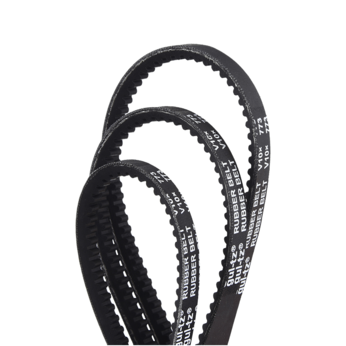What environmental factors should be paid attention to when using and storing ribbed belts
The performance of the Ribbed Belt is affected by a variety of environmental factors, among which temperature, humidity, chemical corrosion, UV radiation, vibration and shock are key factors. Understanding the impact of these factors will help improve the service life and work efficiency of the Ribbed Belt.
Temperature is one of the main environmental factors that affect the performance of the Ribbed Belt. The Ribbed Belt is usually made of rubber or synthetic materials, which are extremely sensitive to temperature changes. In a high temperature environment, the Ribbed Belt may face the risk of aging, hardening or deformation, which will lead to a decrease in its elasticity and friction performance. The service life of the Ribbed Belt will be significantly shortened if it is in a high temperature environment for a long time. Therefore, in the equipment using the Ribbed Belt, the influence of high temperature environment should be avoided as much as possible, especially in high temperature workplaces such as automobile engines or industrial machinery. It is important to ensure that the operating temperature of the belt remains within the range specified by the manufacturer. In addition, it is recommended to check the status of the Ribbed Belt regularly and replace the aged or damaged belt in time to ensure the normal operation of the equipment.
Humidity is also an environmental factor that cannot be ignored. When the Ribbed Belt is used in a humid environment, moisture may erode the material and cause changes in physical properties. Excessive humidity will cause a water film to form on the surface of the Ribbed Belt, reducing the friction between it and the pulley and increasing the risk of slipping. At the same time, moisture may also cause the belt material to mildew, thus affecting its performance. Therefore, when storing the Ribbed Belt, it is necessary to ensure that the storage environment is dry and avoid placing it in a humid place. For equipment working in a humid environment, it is recommended to check the condition of the Ribbed Belt regularly to prevent performance degradation caused by humidity.
Chemical corrosion is another important factor that threatens the Ribbed Belt. In many industrial environments, corrosive chemicals (such as acids, alkalis or solvents) may come into contact with the Ribbed Belt, directly damaging the strength and elasticity of the material. Especially in chemical plants or heavy industrial environments, the Ribbed Belt is often exposed to these chemicals, which shortens its service life. Therefore, when using the Ribbed Belt in these environments, it is recommended to choose corrosion-resistant materials or take effective protective measures to avoid direct contact between chemicals and the belt.
Ultraviolet radiation is also an important factor affecting the performance of the Ribbed Belt. When exposed to sunlight for a long time, the rubber material of the Ribbed Belt may age due to ultraviolet radiation, resulting in a decrease in physical properties and even cracks. Therefore, when storing the Ribbed Belt, be sure to avoid direct sunlight, and it is best to choose a cool and dry environment for storage. During the use of the equipment, shielding measures should also be considered to minimize the time the Ribbed Belt is exposed to sunlight to extend its service life.
Vibration and shock are also important environmental factors that affect the performance of the Ribbed Belt. The vibration and shock generated during the operation of the equipment may cause the Ribbed Belt to loosen or misalign, increasing the risk of wear. Therefore, when installing the Ribbed Belt, ensure that it is properly tensioned to avoid failures caused by vibration. In addition, regular maintenance of the equipment and checking the installation status of the Ribbed Belt can effectively reduce damage caused by vibration and shock.
Hot Products
-
 View More
View More
-
 View More
View More
V-belt For Industry
-
 View More
View More
T Type Industry Rubber Synchronous Belt
-
 View More
View More
Toothed wedge belt
-
 View More
View More
Thickened timing belt
-
 View More
View More
Open Timing Belt
-
 View More
View More
Automotive V-belt
-
 View More
View More
Rubber Flat Belt
-
 View More
View More
Ribbed Belt
-
 View More
View More
Synchronous Pulley
-
 View More
View More
Arc tooth industrial rubber synchronous belt
-
 View More
View More
Automotive timing belt

 English
English 简体中文
简体中文
